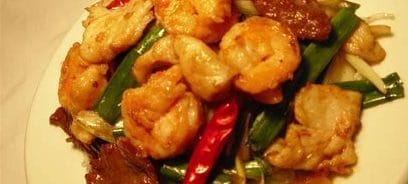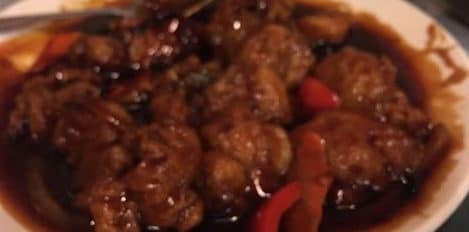Chinese restaurants are common all over the United States, including the greater Chicago area. However, diners who would like to taste different fare have an option at China Chef, which offers a host of traditional, authentic Cantonese and Filipino dishes. While Cantonese cooking is heavily featured in North American Chinese restaurants and take aways, China Chef endeavors to create authentic dishes that may not feature on the average menu. Adding to that the twist of including Filipino recipes, and China Chef can certainly boast about having a unique selection of flavors and dishes.
The history of China Chef: China Chef was founded originally in 1977, by Joyce and Arthur Fong. They developed their business on three major principles: using only high quality ingredients, making their food fresh and creating authentic dishes full of flavor using traditional, home-style recipes. The restaurant can be found in Morton Grove, Illinois, to the North of downtown Chicago. It is a clean, beautifully decorated space with a peaceful, pleasant atmosphere. They offer dine-in service, as well as an extensive carry out menu, and several options for special occasions, including a catering service. They run an establishment that is family friendly, including family dining packages and a separate menu for children at special events. It is a fine place to take your friends, family or work colleagues for a quality dining experience.

China Chef
Filipino cuisine and its influences
China and the Philippines have a long history together, and the Chinese who visited the Philippines over the centuries had a deep impact on the development of Filipino culture, including their cuisine. Traders from China arrived in the Philippines no later than the 10thcentury, and a strong trade relationship developed and continued into the 16thcentury. Many of these Chinese traders were from the Southeast of China, a region known as the Guangdong Province, and this is the region from which Cantonese cuisine originates. Some of the Cantonese traders established temporary or permanent living quarters for themselves in the Philippines. It was most likely these settled Chinese traders who first introduced the Philippines to many traditional Chinese cooking techniques, including sautéing and steaming. Over the centuries, Filipino cooking evolved to include many Cantonese techniques and flavors. They notably include a great deal of seafood, since the Philippines are a series of islands and the Guangdong Province has extensive coastlines. In the 16thcentury, the Spanish, led by Ferdinand Magellan, arrived in the Philippines and claimed all of the islands as a Spanish colony. The Philippines did not declare their independence from Spain until over 300 years later, in 1898. The Spanish colonizers also left a mark on Filipino cuisine. These two major influences mean that today, Filipino cuisine is a unique combination of Filipino, Cantonese and Spanish flavors and cooking styles.
Wide selection of Cantonese and Filipino dishes
For the curious diner wishing to explore something new, China Chef has a section of their menu dedicated specifically to authentic, traditional Cantonese and Filipino dishes, including the following examples:
Ho do tai soup
This soup is originally Cantonese, but is now extremely common and popular in the Philippines, where it is more commonly referred to as hototay soup. This hearty soup dish is usually prepared with pork, chicken and mushrooms. This soup is a bit peculiar and recognizable, no matter what assortment of meats or veggies were used in a given recipe, because it is served topped with a raw egg.
Pancit guisado
This is a Filipino rice noodle dish, adapted over the centuries from Chinese noodle recipes. It features thin noodles prepared with soy sauce, citrus, and sliced meat and vegetables. This is another popular dish in the Philippines and one could expect to see at least one dish of pancit at every festive occasion or celebration.

China Chef
Ampalaya
In English, ampalaya is often referred to as bitter melon. It is a a fruit with a texture similar to that of cucumber, but with a bitter flavor. It originated in India. From there, it was introduced to China in the 14thcentury, and they in turn, introduced it to the Philippines. At China Chef, it is served in two distinctly different, traditional ways; either with beef or with shrimp.
Lechon
Unlike most of the other Filipino items available on the menu at China Chef, this dish has Spanish rather than Chinese origins. While lechon originally came from Spain, it spread around the world through Spanish colonies and the influence of Spanish citizens who settled abroad. Over the 300 years of Spanish colonial rule, lechon became so popular in the Philippines that it is now one of their national dishes. It is a way of preparing pork. First, a whole pig is seasoned with garlic, soy sauce and black pepper. Then, it’s entrails are removed to prepare it for cooking. Afterward, a large spit is inserted through the pig and then it is cooked in a rotisserie style in a pit full of charcoal over a period of several hours. The process of turning and basting the pig over this long period of time, creates a crispy skin that is one of the signature features of this dish.
Kangkong
Kangkong is an unusual vegetable to find in the United States, especially in the Midwest where China Chef is located. In English, it is most commonly known as water spinach. This vegetable is prolific all over Southeast Asia. It has been popular in cooking in many countries, including the Philippines for centuries because of the ease of its cultivation. Kangkong is a semi-aquatic plant that grows well in various conditions and requires very little maintenance to flourish. It is a multi-purpose vegetable since both the leaves and the tender shoots are edible. In the Philippines, it can be served sautéed with meat or other vegetables, in stews or even coated in flour and fried in a fashion similar to Japanese tempura. China Chef features kangkong on its menu when it is available, and serves it sautéed with garlic.
